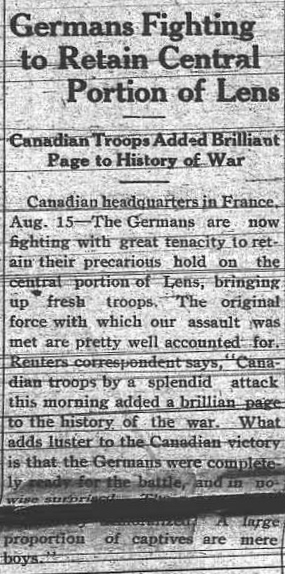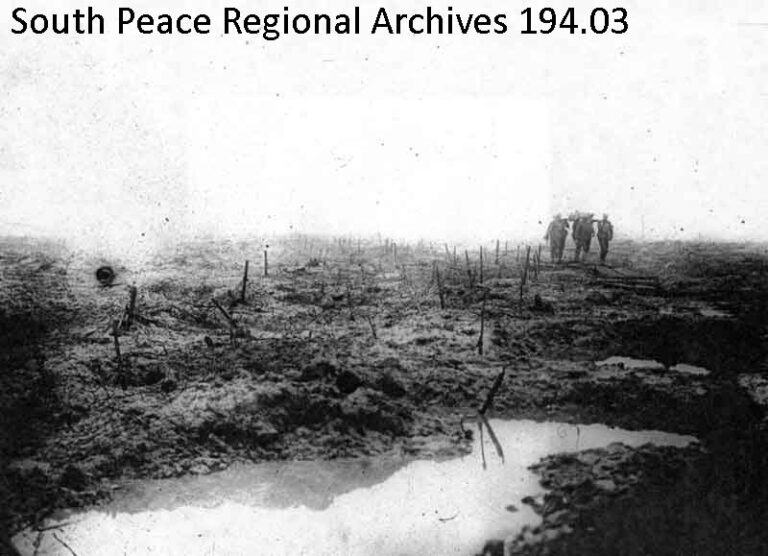O guns, fall silent till the dead men hear
Above their heads the legions pressing on:
(These fought their fight in time of bitter fear,
And died not knowing how the day had gone.)
Tell them, O guns, that we have heard their call,
That we have sworn, and will not turn aside,
That we will onward till we win or fall,
That we will keep the faith for which they died.
(excerpt from “The Anxious Dead” [1917], believed to be the final poem penned by John McCrae before his death)
Following the Canadians’ remarkable victory at Vimy Ridge, the British High Command decided to attack the coal-mining city of Lens with the purpose of diverting the attention of the German Army away from Passchendaele. The plan was to storm the city directly, but Lieutenant-General Arthur Currie, the newly-appointed commander of the Canadian Corps, knew that such action would be far too costly and of little benefit to the Allies. Lens may have been heavily fortified, but Currie knew that if his men could take control of the high ground surrounding the city, particularly Hill 70, the Germans would have no choice but to counter-attack in order to defend their stronghold. As at Vimy Ridge, Currie’s judgement and planning proved to be impeccable once again.
In the early hours of August 15, 1917, Canadian troops began the attack by seizing the trenches around Hill 70. Though the Germans had predicted the assault quite accurately, most objectives were reached early in the day. By 9am, the enemy had begun to retaliate, but with no success. The high ground of Hill 70 was captured by nightfall. Over the next four days, there were 21 counter-attacks in which the Germans used mustard gas and flamethrowers in addition to machine gun fire and hand-to-hand combat. But the gallant Canadians remained impenetrable – they were not to be shaken.
While later Allied attacks on the city of Lens itself did not prove successful, Lieutenant-General Currie and his men had achieved the desired goal of diverting the Germans’ attention away from Passchendaele and weakening their defenses. An estimated 25,000 enemy soldiers were wounded or killed at Hill 70, while Canada suffered approximately 9,000 casualties.
It is rather ironic that this battle was staged in order to simultaneously succeed at Passchendaele, yet it was not until the Canadian troops were deployed from Lens to Passchendaele that Passchendaele was captured. A great tribute to the boys and men who became known as the “Shock Army” or “Storm Troopers” of the British Empire – epithets used not only by the Allies, but by the Germans as well!
To read about the experiences of South Peace soldiers who fought in the Battle of Hill 70, please visit our Soldiers’ Memorial page. Here are the names of a few men who were wounded, killed, or decorated during this particular battle: George Agar, John Cahoon, Donald Francis Coffey, Andrew Elliot, Lacy Gully, Henry Jack Head, Charles William Alfred Herbert, and John Jaundraw.

Sources:
The Canadian Encyclopedia – Hill 70
The Canadian War Museum – Hill 70
https://legionmagazine.com/en/2017/07/attack-on-hill-70/
Sheffield, Gary. The First Word War Remembered. London: Carlton Books Limited, 2014. Print.
